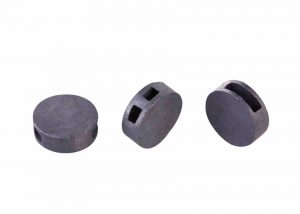The Time-Tested Security of Lead Seal

For centuries, lead seal have played a crucial role in securing valuable goods, and their relevance continues in today’s high-security demands. Acme Seals, a leader in the security industry, presents its range of lead seals, combining traditional methods with modern technology.
Technical Specifications of Lead Seal
Acme Lead Seal are designed with precision to ensure the highest level of security. Here are their key specifications:
- Material: 99.9% Pure lead, known for its malleability and durability.
- Dimensions: Available in various sizes of diameter, holes, thickness and chamber width.
- Design: Each seal features a round, flat surface, ideal for embossing or stamping identification marks.
- Sealing Mechanism: The seals are used in conjunction with a wire (often made of copper or stainless steel) and a sealing tool, creating a custom imprint that is difficult to replicate or tamper with.
- Tamper-Evidence: Any attempt to open the seal will result in visible damage, making unauthorized access easily detectable.
Applications of Lead Seal
